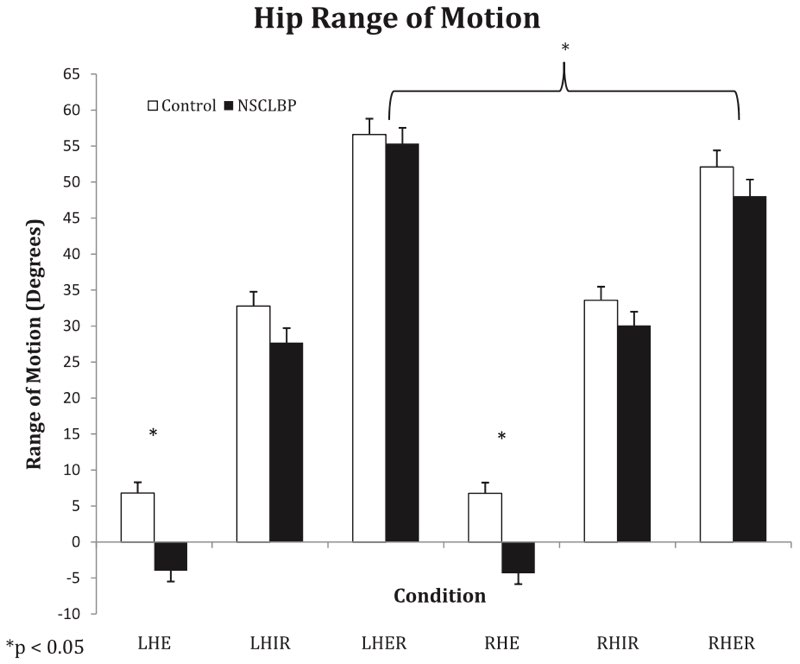Low back pain continues to be one of the most common health complaints that limit people, especially as we age. Rehabilitation of low back pain has transition from simply focusing on reducing the local pain to emphasizing a biomechanical approach of how other areas of the body, such as the hips, impact low back pain.
Essentially we have done a great job moving away from simply treating the symptoms and working towards finding the movement impairment leading to the low back pain. Sure, using something like a TENS device may have a role to neuromodulate pain, but it is now common knowledge that the improvements seen are transient at best and not addressing the real dysfunction.
One area that has received a lot of attention, and rightfully so, is looking at limitations in hip mobility as a cause of low back pain. Much of the research to date has focused on looking at the loss of hip external rotation and internal rotation mobility. In fact, I have an older article on the correlation between hip mobility and low back pain.
I can say that my own ability to help people with low back pain has greatly improved as I’ve learned to focus on hip mobility over the years.
 Hip Mobility and Low Back Pain
Hip Mobility and Low Back Pain
A new study was recently published in the International Journal of Sports Physical Therapy that adds to our understanding of the influence of hip mobility on low back pain. In the current study, the authors evaluated hip external rotation, internal rotation, and extension mobility in two groups of individuals, those with and without nonspecific low back pain.
While using a Thomas test to assess hip extension, the authors found the follow:
- Hip extension in those with low back pain = -4.16 degrees
- Hip extension in those without low back pain = 6.78 degrees
That’s a total loss of 10 degrees of hip extension in those with low back pain.
A Loss of Hip Extension Correlates to Low Back Pain
So now in addition to rotational loss of hip rotational mobility, it has been shown that a loss of hip extension correlates to low back pain. To me, this has always been something I have focused on and makes perfect sense, especially as we age.
The vast majority of our society sits for the majority of the day and becomes less and less active as they age. Among many things, this results in tight hip flexors and an anterior pelvic tilt posture.
Putting recreational activities like sports and running aside, this anterior pelvic tilt posture with tight hip flexors causes a loss of hip extension mobility and the low back tends to take the load but hyperextending. This happens while simply walking and in a standing posture.
Think about the results above, people with low back pain have negative hip extension, meaning they can’t even extend to neutral!
As we all know, the human body is amazing and will compensate. Hips don’t extend? No problem, we’ll extend our spine more.
So a pretty easy step to take to reduce back pain is to work on hip extension mobility.
One drill that almost everyone that trains at Champion PT and Performance gets is what I named the “True Hip Flexor Stretch.” I’ve talked about it at length in past articles, but I am a believer that most of our hip flexor stretches commonly performed in the fitness world are disadvantageous and not actually stretching what we want to stretch.
The True Hip Flexor Stretch is a great place to start to work on hip extension mobility:
As you can see (and feel), this gets a great stretch on your hip flexors without causing any compensatory low back extension. And by focusing on posterior pelvic tilt, we gear this towards those with a lot of anterior pelvic tilt.
I really believe that the “True Hip Flexor Stretch” is one of the most important stretches you should be performing. [Click to Tweet]
Next, Focus on Reducing Anterior Pelvic Tilt in People with Low Back Pain

But based on the current evidence, it’s a great place to start.
Once you’ve started to gain some hip mobility, there is a ton more work to do. We also have to work on glute and core control, among other things. If you’re interested in learning more, I have a hugely popular Inner Circle webinar on my treatment strategies for anterior pelvic tilt that goes into detail on what I recommend:
In summary, we now have a nice study that shows people with low back pain have 10 degrees less hip extension that those without. This makes sense, and focusing on hip extension should be one of the key components of any low back pain program.



 Hip Mobility and Low Back Pain
Hip Mobility and Low Back Pain

